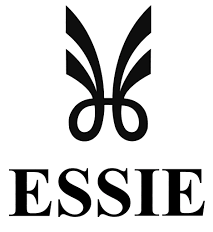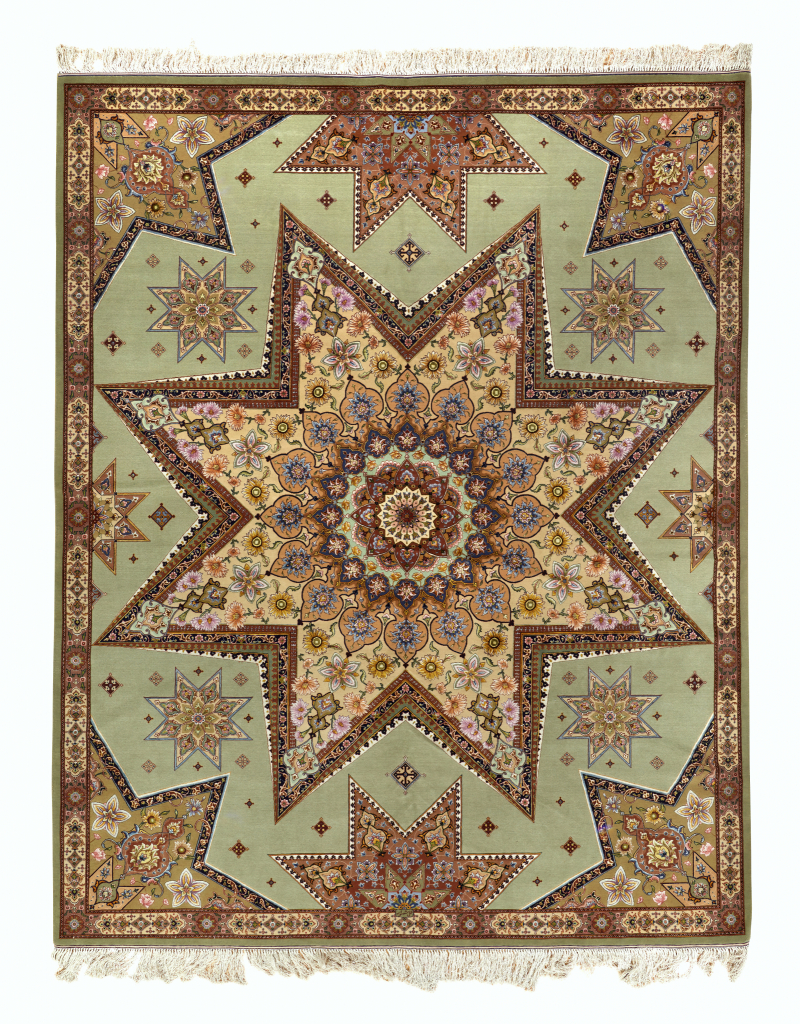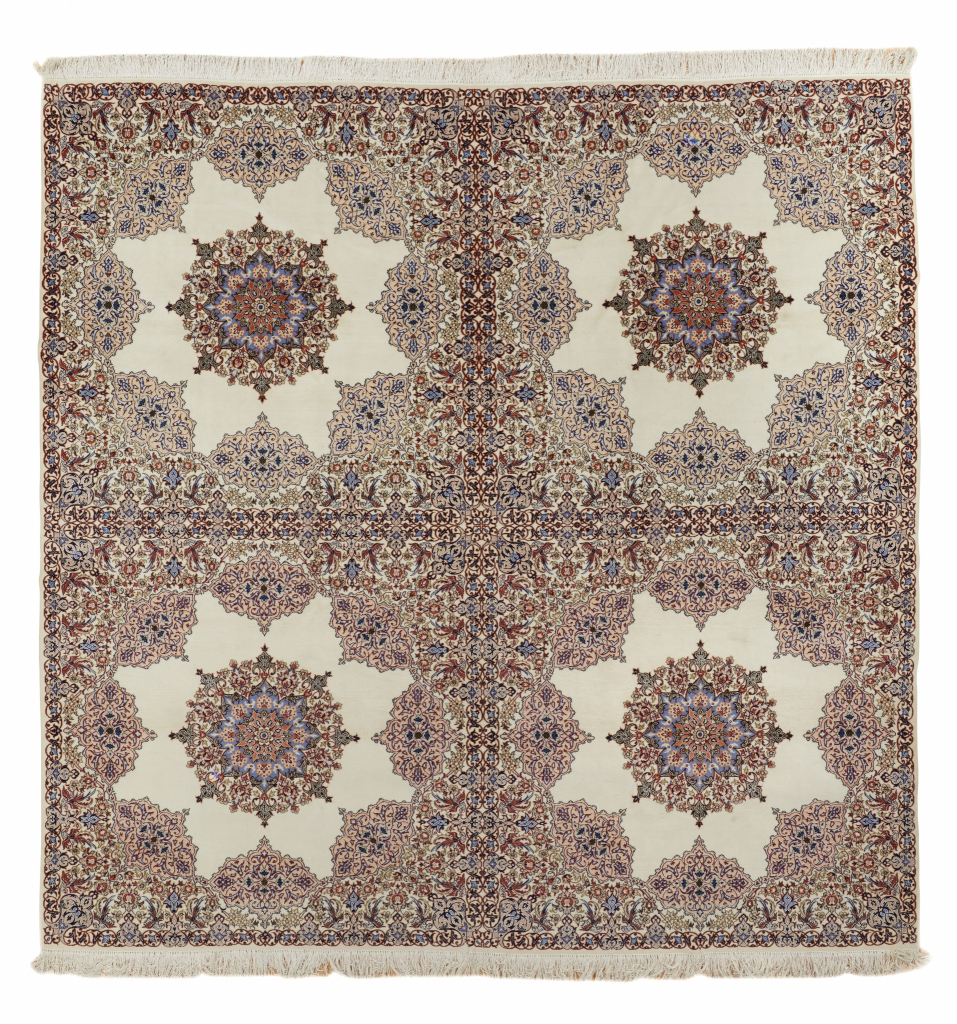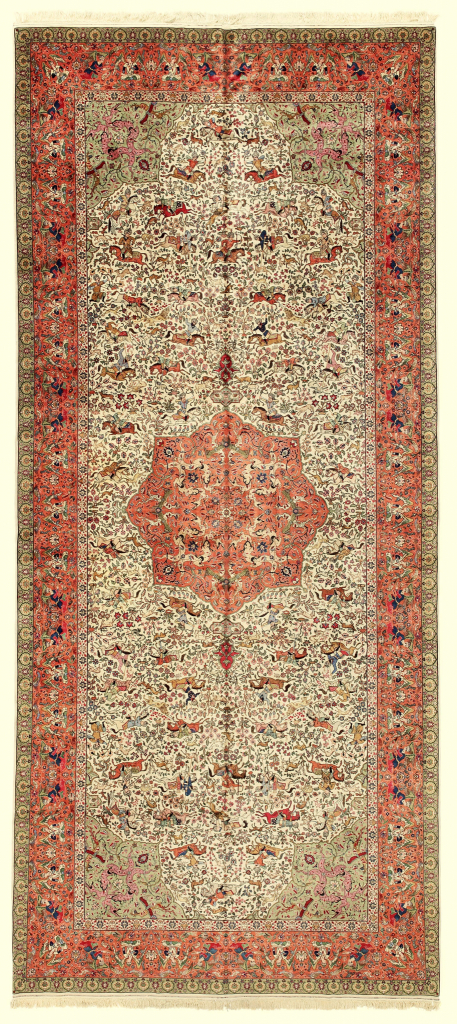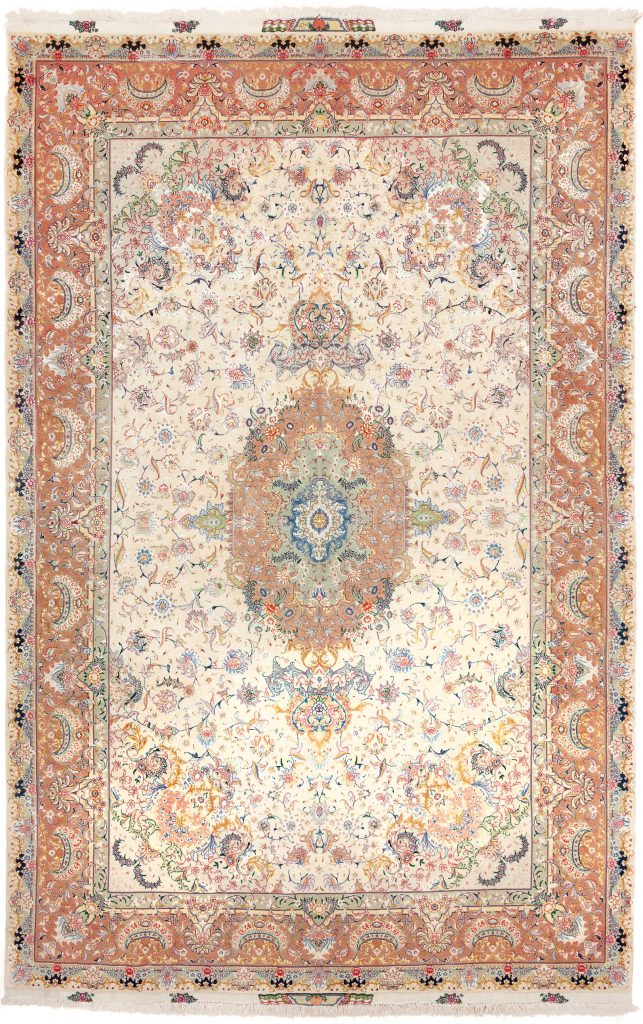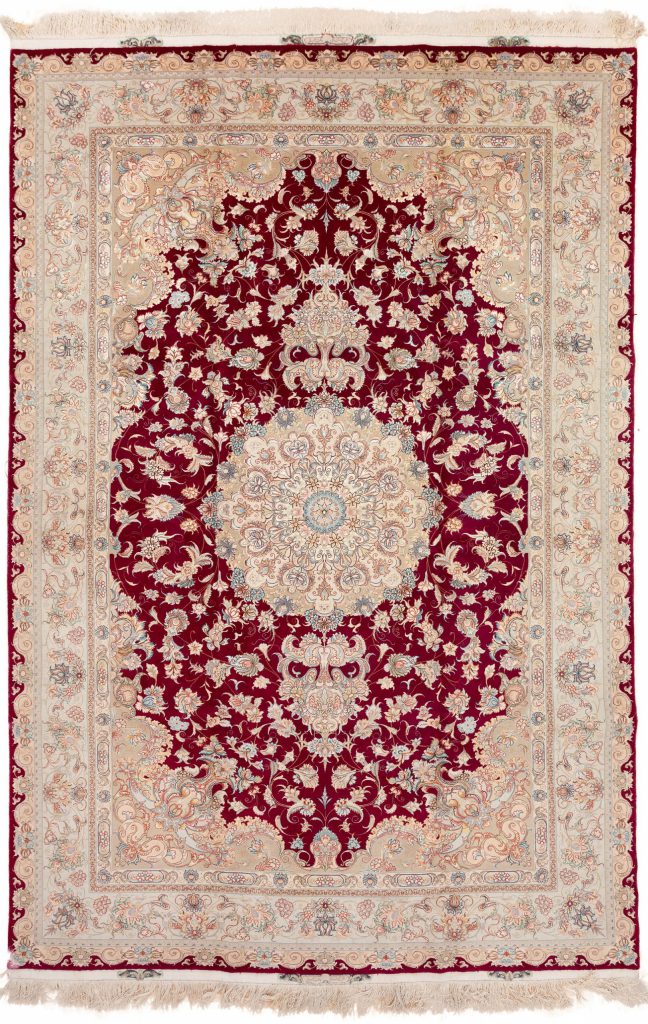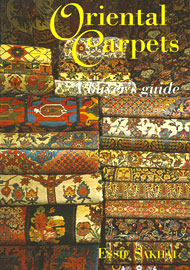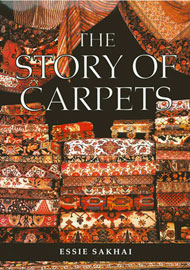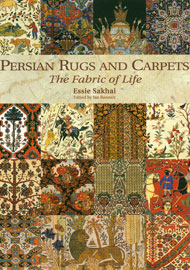Very Fine Extra Large Tabriz Carpet
Rug #5066
An Exceptionally Fine ‘Medallion and Animal’ Tabriz Carpet, North West Persia, Kork Wool on Cotton Foundation
Early 20th Century
The dark blue field with two lobed rectangular flora and fauna pendant medallions supported by scrolling curvilinear sinuous vines issuing flower head roundels ending in serrated curled leaves, adorned with exotic birds and Simurgh, quarter medallion outer surround and spandrels, within a polychrome border enclosing continuous flora and fauna pictorial cartouches
The city of Tabriz in North West Persia, was the earliest Capital of the Safavid Dynasty, ( 1502 – 1736 ), and as such is most likely to have been the centre of carpet production longer than any other significant centre in Persia. Regarded as the ‘Golden Age ‘ of carpet making, the Safavid Shah’s were avid patrons of the arts in all subjects, and actively encouraged pursuit of excellence in craftsmanship and creativity. Tabriz led the way, and as a result of this long tradition, Persian Tabriz carpets, influenced by varying cultures over time display a huge repertoire of varying designs from ‘medallion’ to overall repeat patterns. The range of colours in the Tabriz palette is seemingly endless, and the combination of colours used is always carefully considered to create the most harmonic and decorative end product. From these earlier times, these established traditions have continued through to the present day, and many exceptional Persian Tabriz carpets have been made closely based on the ‘original’ Safavid carpet designs. This magnificent Persian Tabriz carpet is based on a style of design classified as ‘Medallion and Animal’ pattern seen in a small group of recognisable carpets dating to the late 16th Century. They are often referred to as ‘Sanguszko’ carpets so named after an example belonging to Prince Roman Sanguszko which is said to have been acquired as booty at the battle of Chocim in the Polish Commonwealth, 1621, which is exhibited in the Metropolitan Museum of Art, New York, attributed to Kerman in South East Persia. A carpet also considered from this group is in the Victoria and Albert Museum, London.
This fine Persian Tabriz carpet displays a highly complex, detailed design, symmetrical on both the horizontal and vertical axis, with a base level of extremely finely drawn sinuous curvilinear scrolling vines issuing a profusion of small flower heads ending in curled leaves and overlaid with flower heads, and in turn overlaid with mythical exotic birds all of which generate a great harmonic sense of movement to the design. These details are overlaid with two central medallions. Worthy of note is the presence of four small animals in each medallion ‘cavorting’ into the field as a top layer, creating a clever link to the main field area. This is a rare device as normally the medallions are not ‘attached’ but float majestically on top of the field layers as independent entities as part of the design. The spandrels are attached to side ‘half ‘ medallions which disappear into the main border, a device often seen in carpets which suggests an ‘infinite’ repeat to the design giving the suggestion that the main field area continues for infinity. The border of this outstanding Persian Tabriz carpet compliments the main field action adorned with animals in landscape settings. The colours are from an extensive Tabriz palette with many varying tones of red, blue, ochre and ivory applied with great consideration to create maximum impact to the decorative appearance. This Persian Tabriz carpet presents an opulent grandiose rendition of a 17th Century ‘Medallion and Animal’ carpet made in the early years of the 20th Century, technically fine and detailed and in tune with the very best of early 20th Century Persian Tabriz workmanship.

Delivery
Delivery
Enjoy Complimentary Express Delivery at Checkout
Free express next-day delivery on all UK orders.
Free express delivery on all international orders above £2,000.
Estimated Delivery Times
Please allow between 1-3 days for UK, Europe and United States destinations and 5-7 days for Far East, South America, Middle East destinations.
Please note that orders placed after 12pm (UK time), on the weekend, or during holidays will be processed on the following business day. You will be provided with a shipping tracking number once your order has been shipped.
Collection from our Mayfair London showrooms
In-store collection will be ready within 1 business day. To collect in-store you will be required to show confirmation e-mail, official photo ID (passport or driving license) and the payment card used for the order. If someone else is collecting on your behalf, please make sure they bring a letter of authorisation that permits this person to collect on your behalf, official photo ID of the purchaser and of the person collecting and confirmation e-mail.

Exchanges
Exchanges
Essie Carpets offers clients a lifetime exchange service on any items purchased from us should you wish to change your carpets at any time in the future, subject to the item being in good condition; this can be particularly useful when redecorating your home, or when an upgrade in type or quality is desired.

Payment
Payment
Payments are accepted via credit card or debit card with a valid billing and shipping address*. Accepted credit cards are Visa, American Express, and Mastercard. When placing an order, your billing address must correspond to the address of your credit card, or we will not be able to process your order.
Bank Transfers are also accepted; in order to pay by Bank Transfer, please contact our Client Services via telephone at +44 20 7493 7766 or e-mail at sales@essiecarpets.com.
All transactions are secured. The Essie Carpets website is provided with an SSL encryption system to protect personal and payment data.
Similar Carpets
-
 Fine Unique Tabriz Rug - Signed 250 x 197 cm
Fine Unique Tabriz Rug - Signed 250 x 197 cmRug #7006 Fine Unique Tabriz Rug - Signed POA
Fine Unique Tabriz Rug – Signed
-
 Fine Rare Persian Esfahan Rug - Square 244 x 244 cm
Fine Rare Persian Esfahan Rug - Square 244 x 244 cmRug #7004 Fine Rare Persian Esfahan Rug - Square POA
Fine Rare Persian Esfahan Rug – Square
-
 Persian Tabriz Carpet - Fine Signed Antique - Extra-Large Oversize Gallery 677 x 299 cm
Persian Tabriz Carpet - Fine Signed Antique - Extra-Large Oversize Gallery 677 x 299 cmRug #1001 Persian Tabriz Carpet - Fine Signed Antique - Extra-Large Oversize Gallery POA
Persian Tabriz Carpet – Fine Signed Antique – Extra-Large Oversize Gallery
-
 Exceptionally Fine Extra Large Tabriz Carpet 815 x 500 cm
Exceptionally Fine Extra Large Tabriz Carpet 815 x 500 cmRug #5054 Exceptionally Fine Extra Large Tabriz Carpet POA
Exceptionally Fine Extra Large Tabriz Carpet
-
 Exquisite Very Fine Persian Tabriz Carpet - Signed 305 x 200 cm
Exquisite Very Fine Persian Tabriz Carpet - Signed 305 x 200 cmRug #2675 Exquisite Very Fine Persian Tabriz Carpet - Signed POA
Exquisite Very Fine Persian Tabriz Carpet – Signed
-
 Exquisite Very Fine Tabriz Carpet - Signed 300 x 200 cm
Exquisite Very Fine Tabriz Carpet - Signed 300 x 200 cmRug #2660 Exquisite Very Fine Tabriz Carpet - Signed POA
Exquisite Very Fine Tabriz Carpet – Signed
